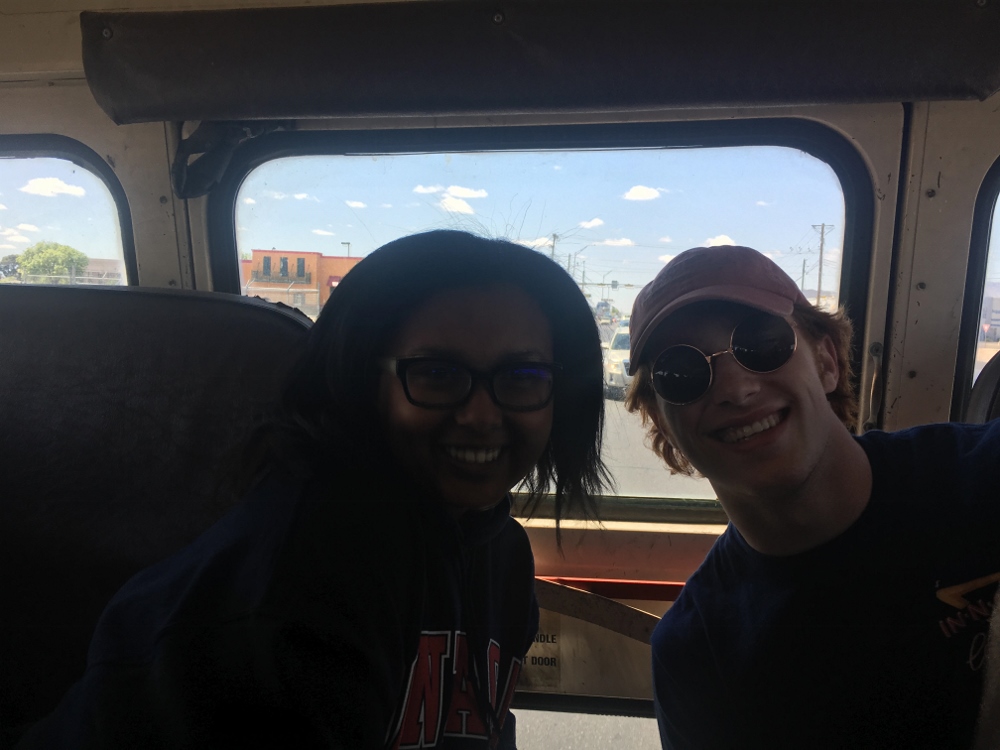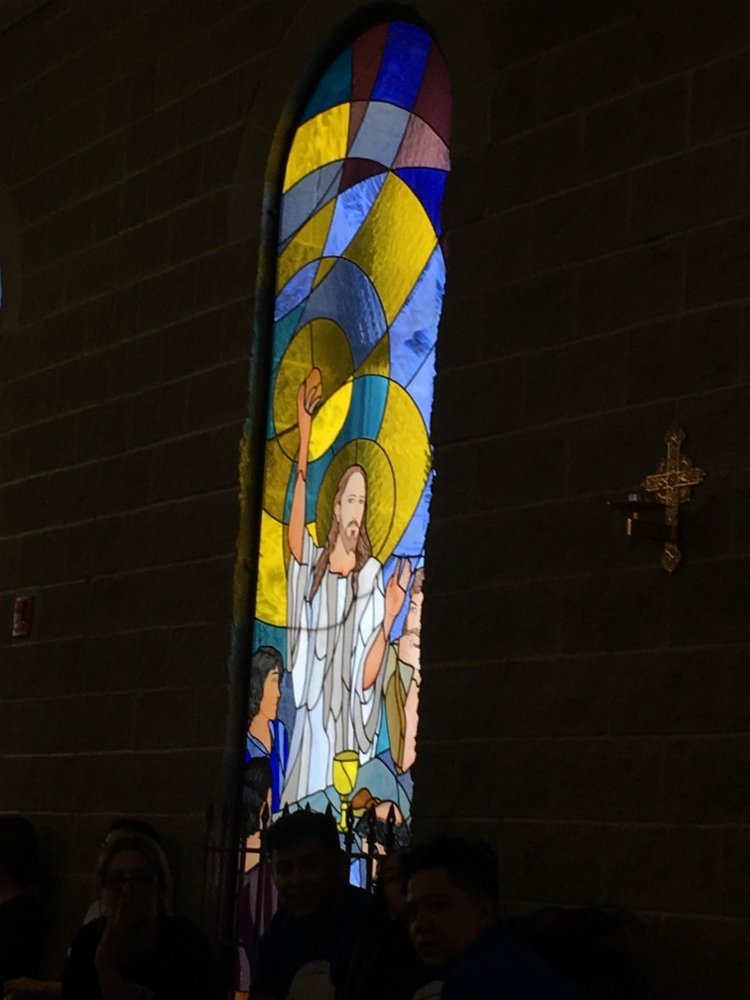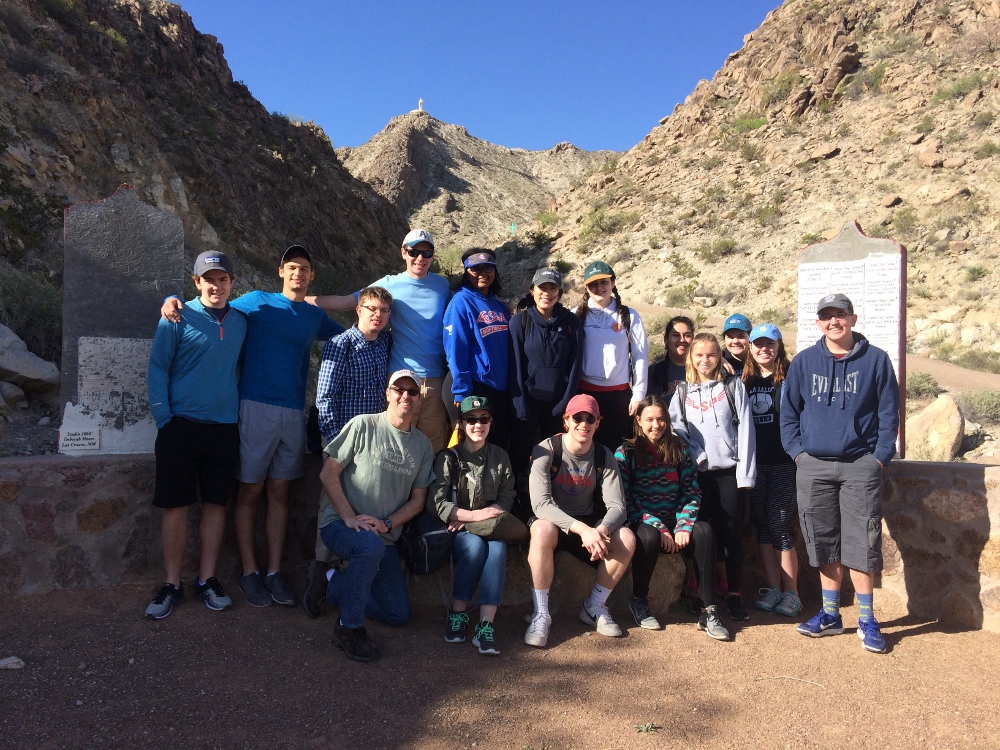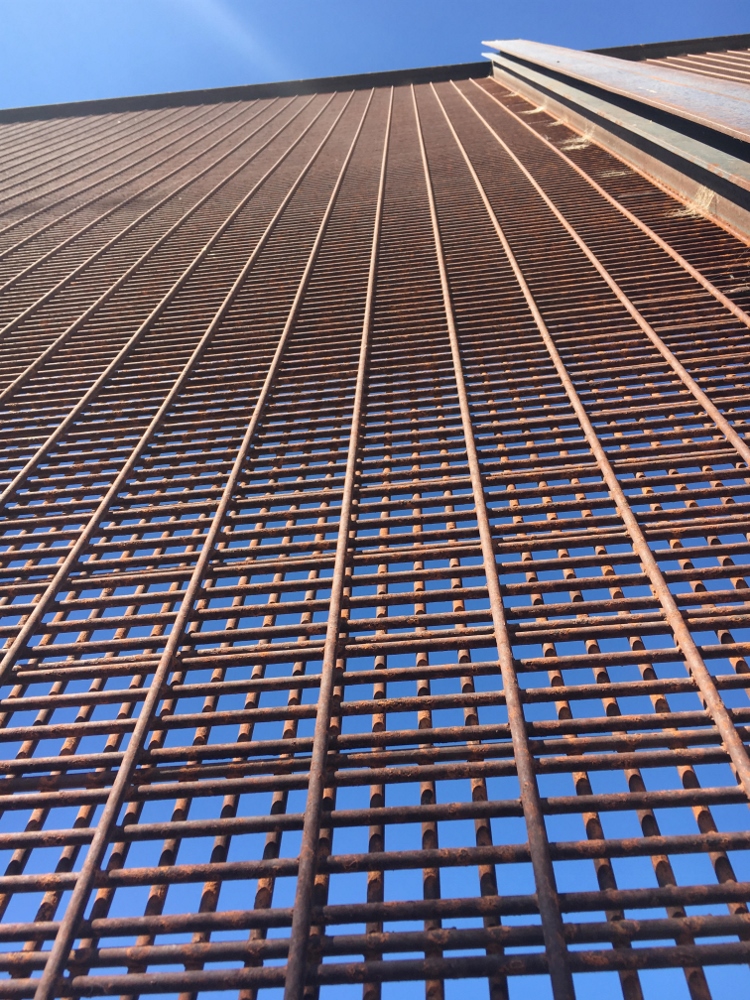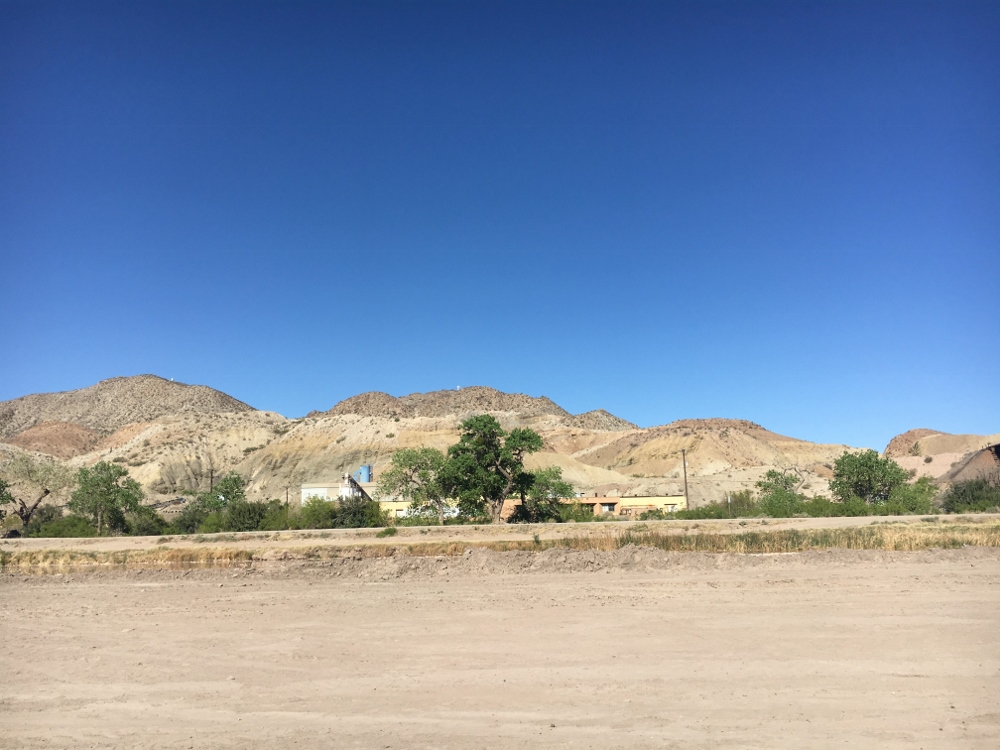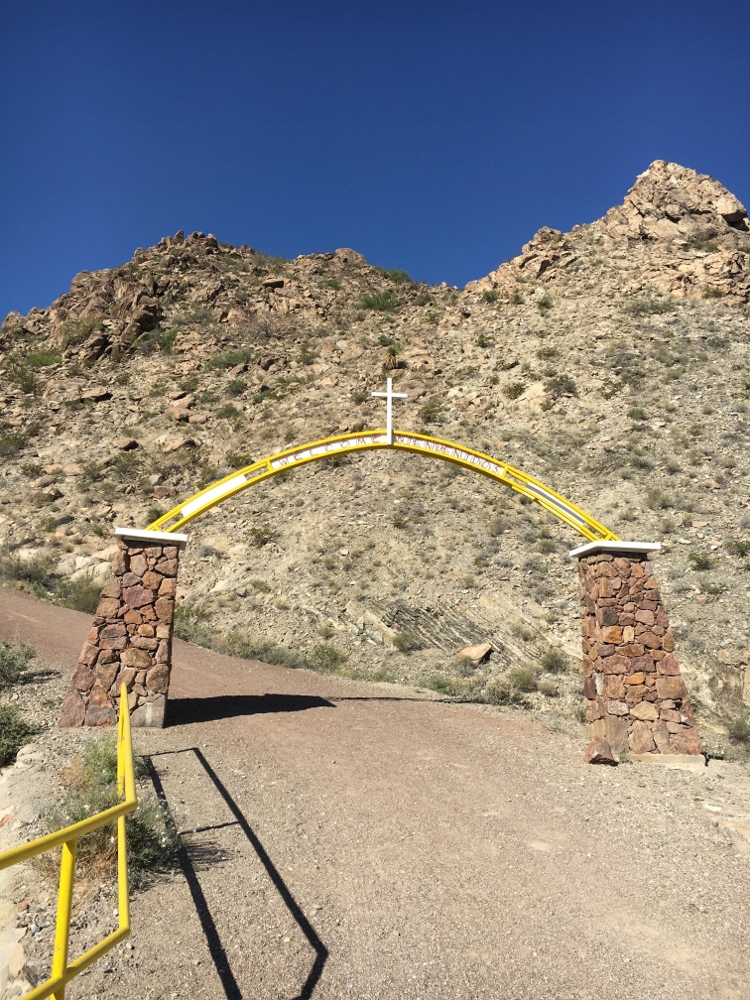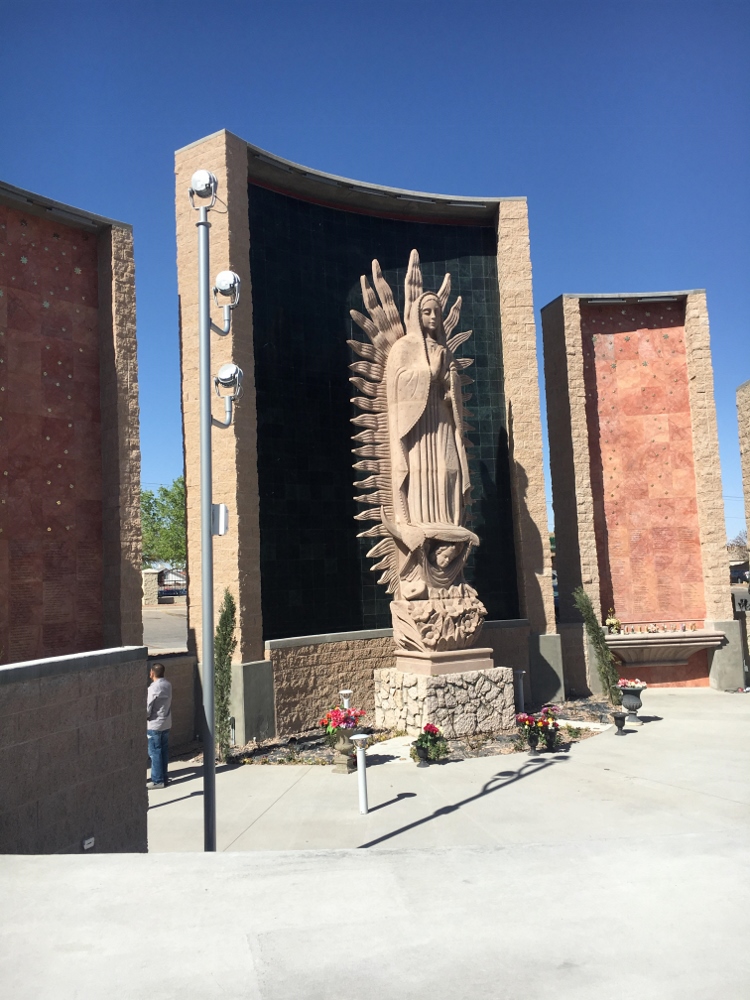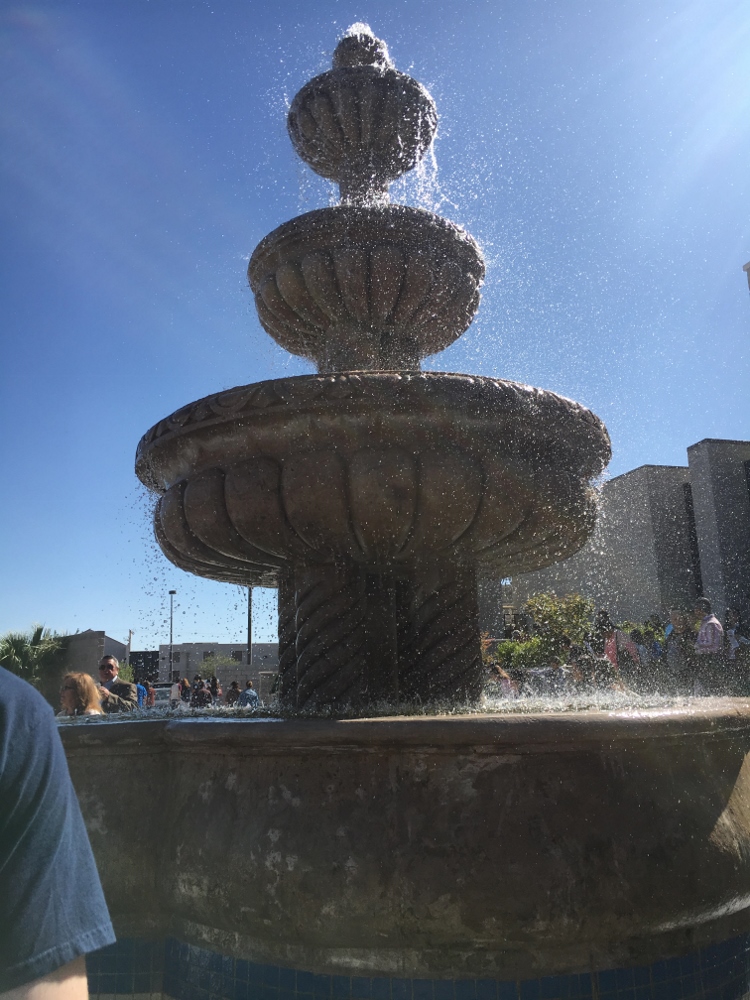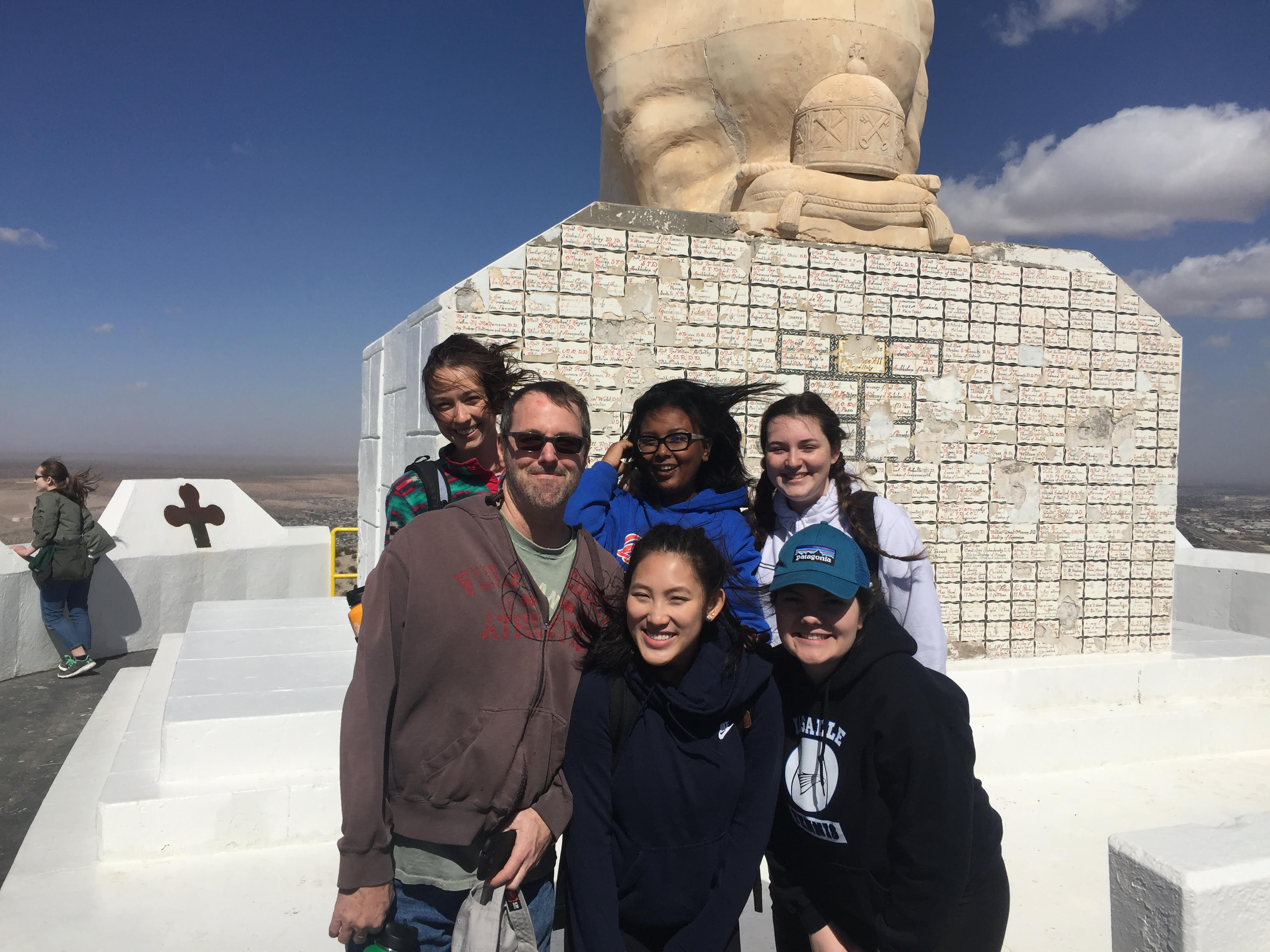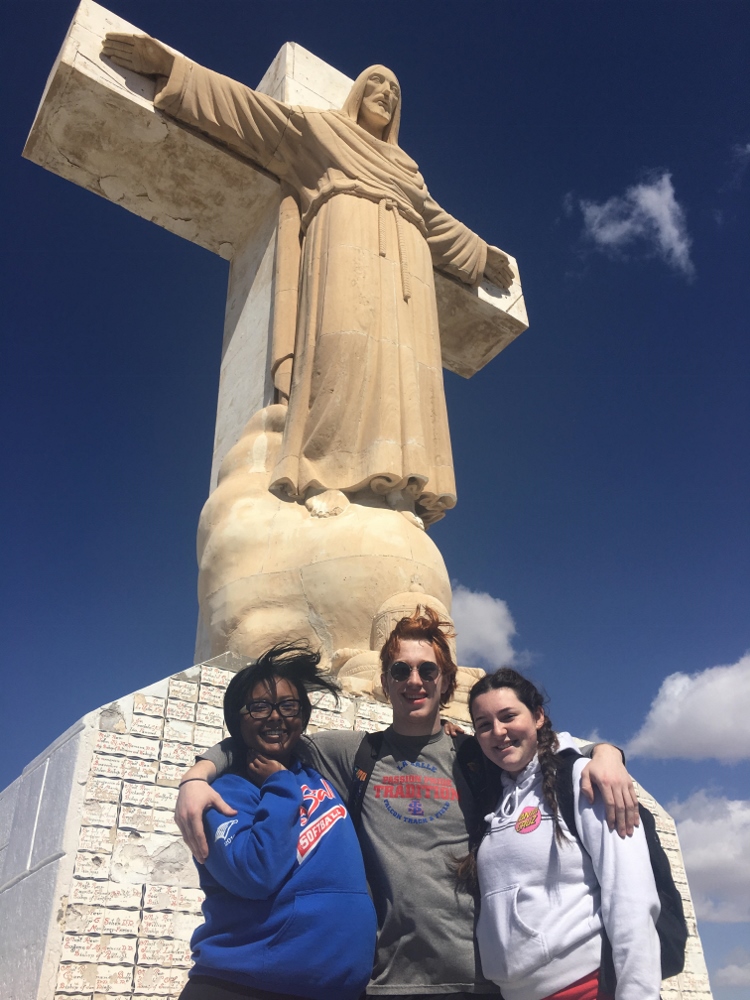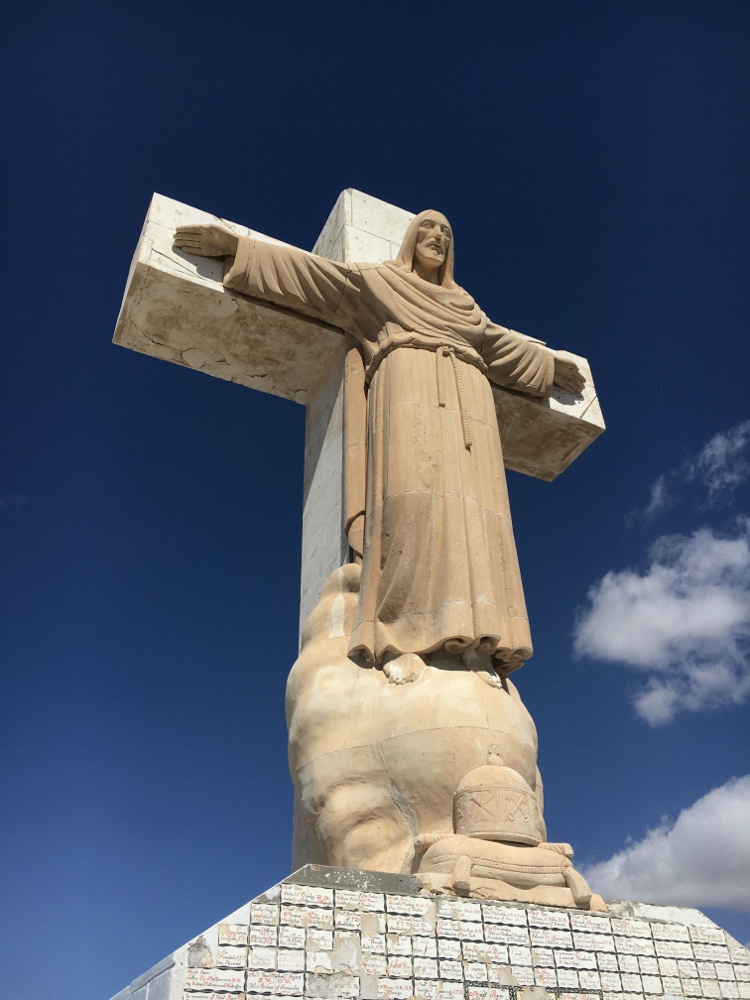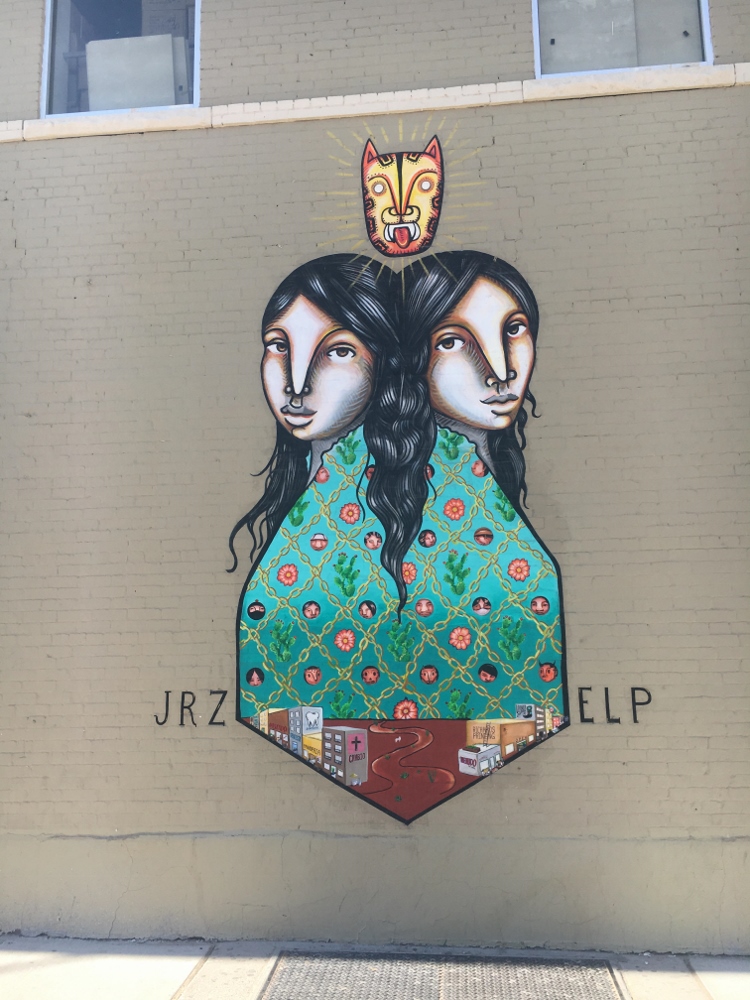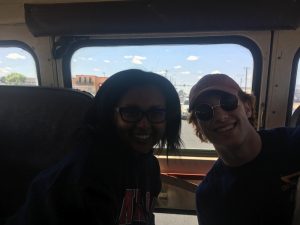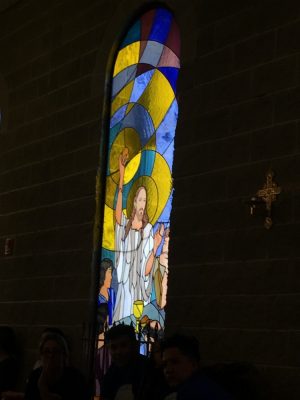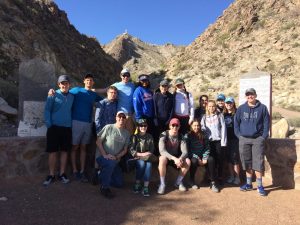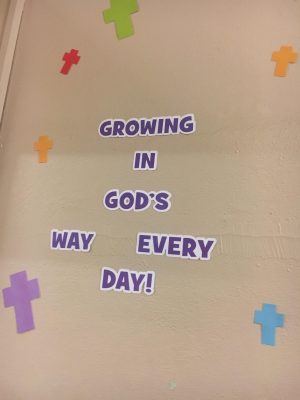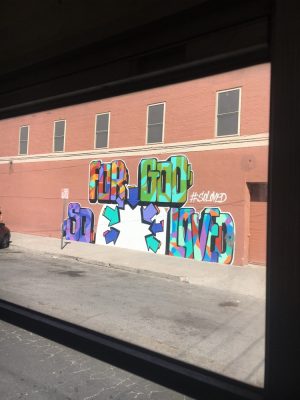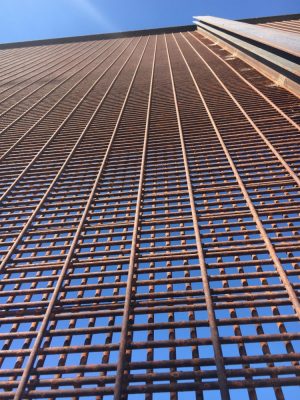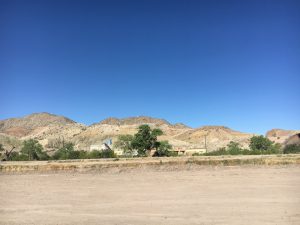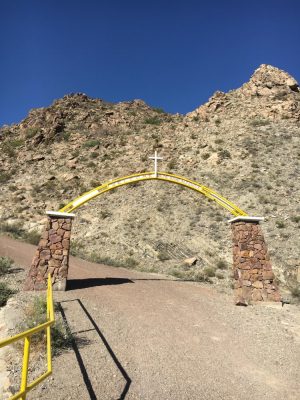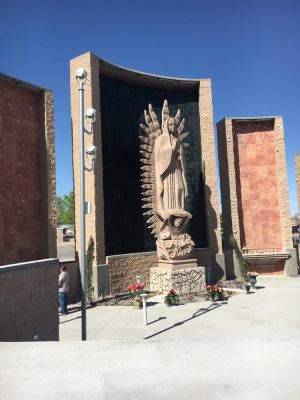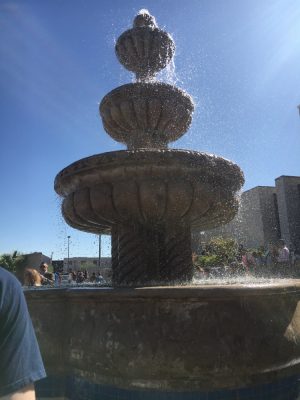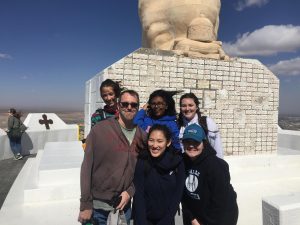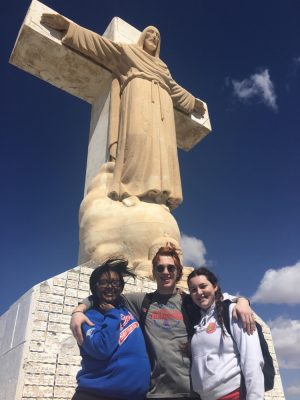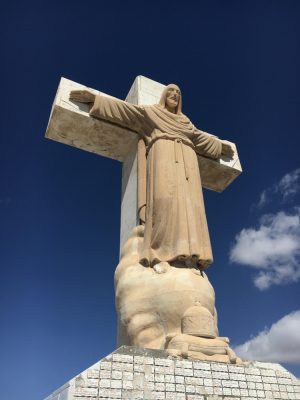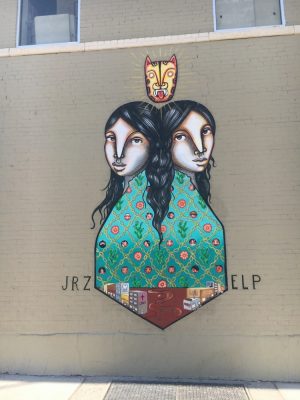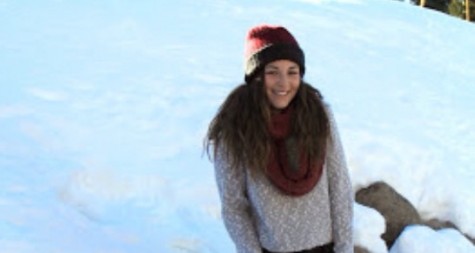El Paso Immersion: An Eye Opening Experience
April 19, 2017
I recently had the opportunity to travel to El Paso, Texas to participate in one of the two border immersion trips. This is the first year that this trip has been offered, and it was an incredible experience.
We began our trip the minute the plane landed. Our bus drove straight from the airport to St. Mark’s church where we attended a mass all in Spanish. This experience in itself was the same as going to any other ordinary mass, besides the fact that I could barely understand what they were saying.

After the mass and settling in to St. Ignatius Parish, where we were staying, we traveled to Cathedral High School where we learned about the history of the borderland where we were staying for the next four days. This was a very good starting point for the trip because we got a general idea as to what life in El Paso and Juarez was like before the strict border rules and why and how the rules were initially put into place.
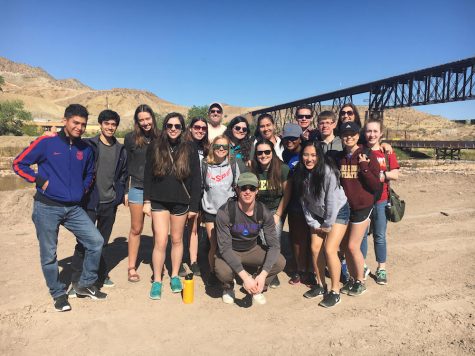
The next day, the first big presentation we were given was from border patrol. We were all expecting big and scary white men but, much to our surprise, they were both two very nice Mexican-American men. Talking to them was a very interesting experience because what they were saying all seemed very reasonable – such as the fact that they are not allowed to use force when capturing a refugee. However, I then asked the question “How long does it take for people who apply for citizenship to gain it?” Their response was one year, which made all of us look to each other, feeling slightly confused, because we expected a much different answer and because we knew the correct answer is much different.
After the presentation we all talked to each other expressing how we were surprised by how nice the Border Patrol agents were, but we were also confused by their answers, because they seemed to be hiding the truth.
We then drove to a main section of the border fence and walked along it. What was so interesting and eye opening about this was the fact that the cities are so close to one another. All that stands between them is a fence and a small body of water and then the city begins. The people of El Paso are not scared to go into Juarez, and some even travel from their homes in Juarez every day to go to school in El Paso and vice versa. Personally, the main thing in which I took away from this vital part of the immersion was that one of the safest cities in the world and the most dangerous cities in the world are neighbors who frequently interact with one another.
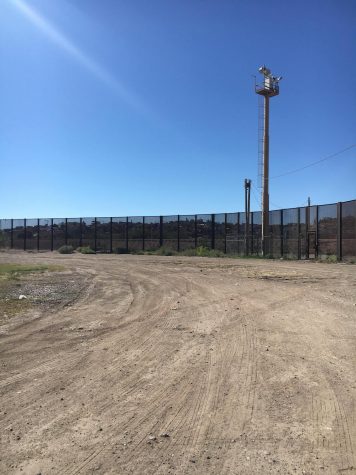
We then went to a cafe and market called La Mujer, where they sell handmade items and heard a presentation from a woman that worked there. Her presentation was definitely the most passionate that we heard and the main point she tried to get across to us was answering the question: whose side are you on? The two sides she gave us are being motivated by money and living a lavish lifestyle; or being motivated to help others, specifically immigrants. Those are the only two options, she said.
After hearing the woman at La Mujer pour her heart out to us we went to hear a presentation from a woman at the unaccompanied minors program or DMRS. For me personally this was one of the most interesting and eye opening speeches that we heard. During this we learned that children who immigrate into America go into centers where they will hopefully find a lawyer to represent them in court.
At first it sounded like they were helping the children but as the presentation went on we learned that the age at which children must be able to speak for themselves completely rather than their parents speaking for them is only six years old. This was horrifying to me because six years old seems so young, but hearing about the long process that children have to go through this is just one obstacle for many for them.
Later, we heard a speaker from Las Americas. The woman who spoke to us was a lawyer who was able to represent immigrants in court. During her presentation we learned how long the process was to get citizenship. She showed us a chart that is on the US immigration website that showed how long it should take to get citizenship based upon your scenario. This chart in general was extremely difficult for any of us to understand so I can not even imagine someone whose first language is not English trying to understand the system, which is not translated to Spanish a majority of the time.

We begun the next day with a hike up Mt. Cristo Rey. As we walked up the mountain we did the stations of the cross because at the very top of the mountain was a giant statue of Jesus on the cross. This hike is extremely popular for the people of El Paso but our guides said it can be dangerous because immigrants coming into America from Juarez sometimes immigrate along off-road trails or they sometimes pretend to be in a group of tourists or Catholics who are hiking as a group. However, the most inspirational part of this experience was at the top of the mountain. When you stand on top of Mt. Cristo Rey you can barely see the fence that separates Juarez from El Paso. However if you are looking for the fence you can see just a thin line separating the two cities that you can not even see the end of.
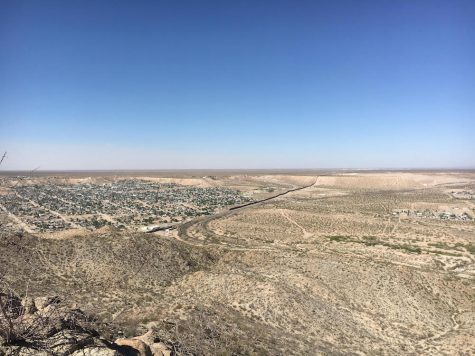
After this we went to a place that acted as a daycare for immigrant children who are currently in foster families called Rico Ministry. The center is named after a young boy, Rico, who was shot and killed by Border Patrol when trying to immigrate into the United States. During our time with the five children we heard about their stories of being smuggled into the United States by either family members or strangers. Not only was hearing their stories inspirational but we were also able to sing and make crafts with them. These religious songs were about moving mountains standing in your way and being thankful for everything you have. Hearing these children, who have gone through so much, sing about these things, moved my heart because despite the many hardships they have faced and will continue to face they are still thankful for everything that they have in their life.

We then visited a place called Annunciation House where we got a tour of the facility and heard from an immigrant from Guatemala. The Annunciation House allows immigrants to stay there for the amount of time it takes for them to get a lawyer and serves as a way to get to the family that they are trying to stay with in the United States.
When talking to Martia from Guatemala we learned that she was getting on a train that night to stay with her sister and go to court. She had the best attitude I could ever imagine someone in that situation having. She had within that week come from Guatemala, speaks no English, is getting on a train to Florida, has a daughter she needs to keep safe, and has huge ankle monitor until she becomes a citizen, which I pray happens.
The final big activity we did was with a youth group from St. Mark’s church. We began by singing songs with them and dancing, which was surprisingly fun, and then we were able to eat dinner with them and chat. At the table I was sitting at were three boys who told us about their experiences. They were all born in the United States but their parents were born in Mexico.
Caesar, one of the boys, told us how his parents are from Mexico and had a small amount of money but when they came to the United States they started a company and are now living well. He spoke to us with such passion about how a majority of people coming into the United States just want a better life for their family. However one thing that I will never forget from those hours is how proud all of them were of their city. They absolutely love their culture and feel 100% safe where they are, which I definitely did not expect.
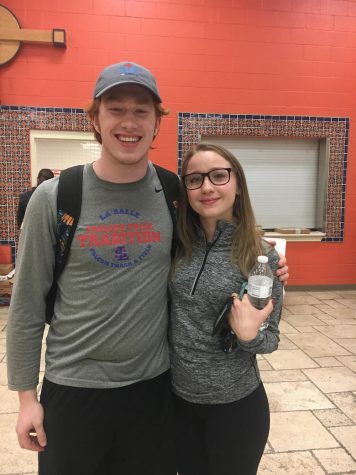
The last thing that we did in El Paso was walking throughout downtown. The culture of the city is absolutely amazing. Every corner you walk you see a mural of some sort, mostly of a religious nature, that represent the cities of El Paso and Juarez in a sentimental way. Each mural had such a deep meaning and one of the most famous murals in El Paso is the sister cities mural. The people who live in the border town call El Paso and Juarez sister cities because of how close they are to each other and how often people go into Mexico and come out of Mexico.
I was amazed by how much I learned on this trip because I had initially thought that I had a solid opinion on immigration and that I knew what I was talking about. However, I was so wrong. Hearing and talking about immigration is indescribably different than actually going to a border town and hearing the stories of immigrants and of people who help immigrants. I strongly suggest attending a border immersion trip to El Paso if you have the chance because it was such an eye opening experience that I would not trade for anything.
***
Here are some of the thoughts and reflections of several other students who attended the immersion trip:
Delina Biniam: “What I took from this experience was how beautiful and strong the people of El Paso are. Being so close to Juarez and the border made me realize how the U.S. is not so different from Mexico. Most people fear rapists and murderers and drug dealers coming into our country when they forget our country is already full of them (most not even of Hispanic descent). People risk their lives just to come to a country of freedom when they aren’t even willing to help them out. I hope that we can all have an open mind when it comes to the border [and] think about who is really being [affected] by all the regulations.”
Julianna Sprague: “Overall, I feel like this experience is very eye opening and has allowed me to see how easy my life is and how I have so much to be grateful for. I realized that people really have no clue as to what happens on the border and that there is so much that the whole world needs to learn. Even though I learned so much from the stories of the people who live here, I know that I still have so much more to learn and I hope that others are willing and want to learn along with me.”
Chris Farrow: “The world is neither black nor white. It is solely shades of grey where neither one group is wrong nor one is right. As humans we are all struggling to be accepted and feel loved and safe. For some humans it is more difficult to find solace when their home is a war zone.”
Olivia Cooper: “Going into the trip, I had no idea what to expect. The greatest thing that stood out to me was realizing how much I really don’t know about immigration. I realized how important of an issue it is and I value so much the small connections that I had with the people I met during the trip.”
Jasmin Gomez: “Even though immigration is a complex issue, there is one thing that can never be debated, and that is each individual’s human dignity.”
Hannah Markowski: “This trip was an amazing and unique experience, filled with a wide range of emotions; there were moments where I couldn’t stop smiling and other moments where what I saw broke my heart. Going to the border made the places and people I read about in news stories and my mom’s college textbooks a tangible thing. I feel that now I can make more informed decisions when it comes to which politicians and what companies I choose to support.”

